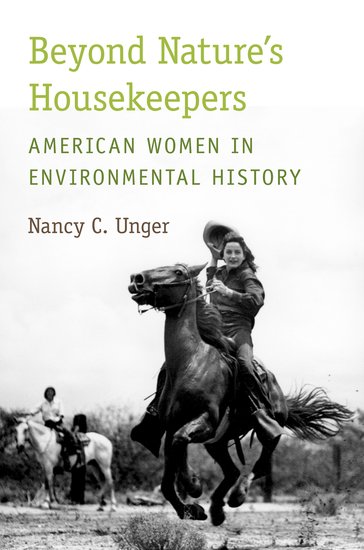By Nancy C. Unger
In the fall of 1994, I was invited to offer my university’s first environmental history course. Entering this unchartered territory, I scrambled to find sample syllabi and appropriate books. Nearly two decades later, environmental history is a standard course offering and my university, like so many others, boasts a thriving Environmental Studies major as well as a major in Environmental Science. Environmental history books, textbooks, articles, blogs, podcasts, and documentary films are flooding the market. The ASEH/FHS has grown by leaps and bounds, and Environmental History is recognized as a leading journal.
Some historical fields have evolved slowly, with movement like a glacier’s—meaningful, but slow. Environmental history has been more like an avalanche—fast, furious, and undeniable. Some of this growth can be attributed to timing, as environmental history and the information revolution took hold almost simultaneously. Tools like GIS made unique contributions to the field’s success. And like all fields, environmental history reaps the benefits of the internet, such as immediate access to articles and essays. H-Environment has created a global community of scholars in which questions are raised and answered, and opportunities to present and publish scholarship are widely circulated. More importantly, even as some traditional fields of historical study are increasingly denigrated as no longer crucial to the historical canon, appreciation of the practical value of environmental history is on the rise on campuses all over the world. Many universities offer not only environmental courses, but are dedicated to applying lessons learned, making their campuses as green as possible. Their success is judged (and celebrated) by publications including E-Magazine and the Chronicle of Higher Education.
One of the best changes is the increasing interdisciplinarity of environmental history and its incorporation into a variety of related studies. This sets it apart from other relatively new disciplines. Women’s history, for example, too often still finds itself isolated in a kind of pink ghetto as professors (and texts) of history courses with more traditional emphases (political, economic, and specific periodization) either ignore women’s history entirely or incorporate it only superficially. Environmental history, on the other hand, has more quickly been accepted as crucial to the historical enterprise and is given considerable coverage in a wide variety of courses covering a range of places, historical periods, and topics (including science, religion, gender, race, economics, and politics).

There are some drawbacks to all this exciting growth, and not just that it’s impossible to keep up with the mounting supply of new information. A common complaint among environmental history professors and students alike is that the courses are just so depressing. Students complain that, having gained a true understanding of the breadth, depth, and life-threatening nature of the problems, they feel overwhelmed and helpless. In the face of rapid global warming, their individual efforts, including recycling their bottles and cans and bringing their reusable containers to Starbucks, seem akin to rearranging the deck chairs on the Titanic.
One of the new challenges facing this thriving field is to replace, or at least temper, the doom and gloom with a sense of practical empowerment. In delineating the human role in the creation of our current environmental crises, some historians are taking care to teach, rather than preach or scold, and highlight the roles that people have played in responding constructively to those crises, and in heading off others entirely. Such approaches create not a false sense of security, but inspiration, instilling feelings of responsibility and providing tools to help implement positive change.
Environmental history continues to experience a variety of growing pains, but its growth, and its ability to inspire, challenge, and promote genuine understanding and meaningful reform, reveals in new and dynamic ways the profound value of the study of history.
Nancy C. Unger is Associate Professor of History at Santa Clara University. She is the author of Beyond Nature’s Housekeepers: American Women in Environmental History and the prize-winning biography Fighting Bob La Follette: The Righteous Reformer, and book review editor of The Journal of the Gilded Age and Progressive Era.
Subscribe to the OUPblog via email or RSS.
Subscribe to only environmental and life sciences articles on the OUPblog via email or RSS.




[…] this was a class was on one of her other interests: environmental history. Nancy Unger recently evaluated the state of that field, whose growth in the last two decades has been “like an avalanche—fast, furious, and […]
Yet you would think that something as powerful as the modern environmental movement here in the States would have a very definitive beginning but there really is no one-day wording you could put your finger on say, “Ah, ha. This is when it began.”
Some people cite 1970 as It involved the first Earth Day celebration while others look to 1962 with the publication of Rachel Carson’s noted book ‘Silent Spring’ while others go back to the 1890s when the Sierra Club was formed. However, I personally look at Pres. Teddy Roosevelt as the beginning of the real environmental because he was the first US politician to enact sweeping changes at land set-asides and taking on powerful special interests groups represented US industry which was wrecking havoc on the environment at that time.
[…] & the 19th century stomach Environmental History’s Growing Pains On Marie Darrieussecq – Pig Tales (London, 1998) The links between science studies and British […]